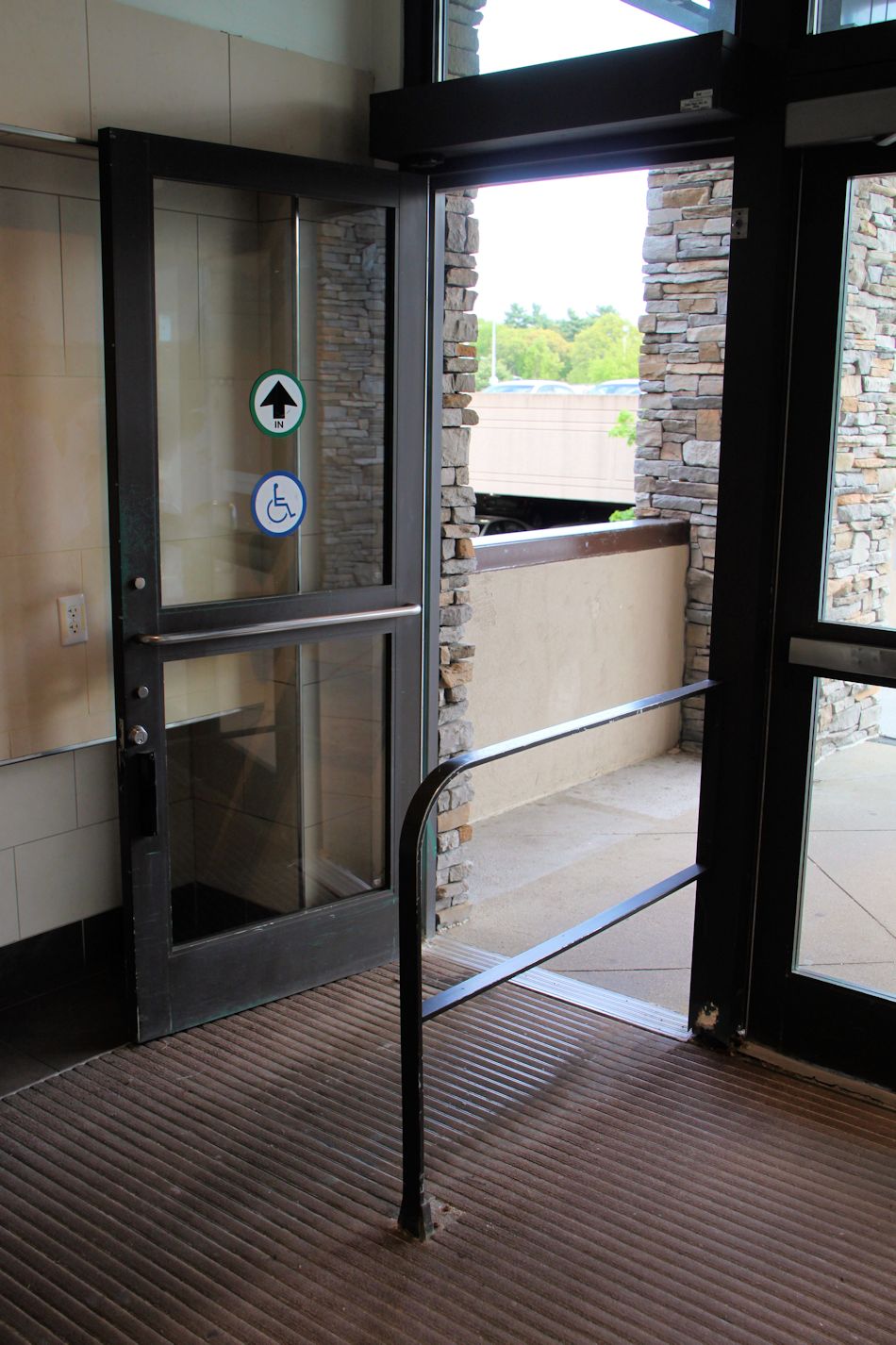This video is pretty amazing. Swallows nesting in a university parking garage could have been locked in when doors were added to convert the garage to the campus bike center. Is this an example of the swallows’ intelligence, or dumb luck?
*************************
 On a related note (you know I can’t resist), the BHMA standard for low-energy operators (A156.19) requires the operators to be actuated by a knowing act. A knowing act may be a push plate actuator or non-contact switch mounted on the wall or jamb, the act of manually pushing or pulling a door, or an access control device like a card reader, keypad, or keyswitch (read more about it here).
On a related note (you know I can’t resist), the BHMA standard for low-energy operators (A156.19) requires the operators to be actuated by a knowing act. A knowing act may be a push plate actuator or non-contact switch mounted on the wall or jamb, the act of manually pushing or pulling a door, or an access control device like a card reader, keypad, or keyswitch (read more about it here).
If a door with a low-energy operator is actuated by a motion sensor, which is not considered a knowing act, it has to meet the requirements of ANSI/BHMA A156.10, which is the standard for full-powered operators. In most cases this includes safety sensors and guide rails (like the photo at right).
The other disadvantage of using a motion sensor (besides the bird issue), is that the doors are opened automatically each time, creating extra wear-and-tear on the hardware. The opening speed for low-energy operators is limited so they may open too slowly and stay open too long, another reason to operate the doors manually whenever possible and actuate a knowing act switch when automatic operation is needed.
With that said, in the case of the campus bike center a motion sensor is probably the most convenient way to operate the doors. They may be missing some guide rails if a current edition of the BHMA standard is in use for their jurisdiction.
You need to login or register to bookmark/favorite this content.





Once again the animal kingdom is smarter then the human kingdom
That was exactly what I was thinking when watching this video.
I’d say they know what they are doing!!
At my local home-improvement store, I’ve seen birds in the outdoor, but fenced-in, landscaping materials section flying in front of the motion sensors and then into the store. They certainly look like they know what they are doing.
Lori-
Thanks for the smile on a Friday afternoon. Great video!
Birds 1, Humans 0. No need to say anything else.
I’m curious about the set of stairs out side of the Bike Center, as shown in the final seconds of the video.
i’m sure this one is for the birds.. i mean, do they go outside to do their “business” ???????????
and how does the security work for the doors if one can just approach the doors and wave a bird sized object around ?
Lori you are correct about the guide rails needed for the campus bike center. Section 6 of the current ANSI 156.10 for Power Operated Pedestrian Doors mandates 2 guide rails on the swing side. In this case since it appears there is a motion detector on both sides of the doors the guide rail requirement length shall be open door plus 55 inches. Additionally the other usual guide rail requirements must be adhered to such as height, horizontal divider and location.
If an automatic door professional who is an AAADM (American Association of Automatic Door Manufactures) certified inspector were to inspect this set of doors for compliance they would fail the inspection for not having guide rails.
Thanks for the confirmation!